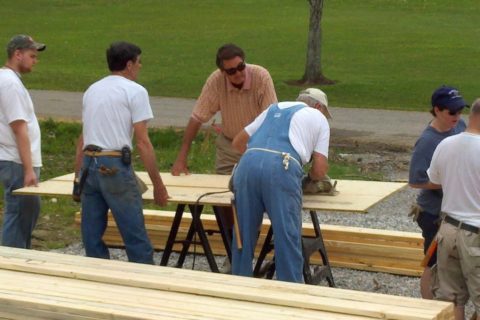Habitat International was founded in 1976 by Millard Fuller and his wife Linda Fuller was raised in rural Alabama and became active in church organizations and involved in various entrepreneurial ventures. He attended college and law school, starting a successful mail-order business during his law school days. Before the age of 30, he was worth over $1 million. Then his life fell apart. His marriage was decaying, his health was failing. He decided to liquidate his assets and give away all the proceeds. This was in 1968 and for the next several years he was involved in several projects which eventually led to the establishment of Habitat.
Seventeen houses were dedicated in the first year of Habitat International’s existence. In 1999, volunteers and homeowner partners completed 16,044 houses (an increase of almost 6000 over the preceding year). That’s about as many as were built in the first 14 years combined. In September 2000, during the Jimmy Carter Work Project, the 100,000th house was built in New York City. During this same week, the 100,00lst house was built in Plains, Ga. on land formerly owned by the Carter family, as a kickoff for the goal of another 100,000 homes to be built during the next 5 years. Habitat for Humanity surpassed a significant milestone in 2014: 800,000 homes built or repaired and served more than 4 MiUion people around the world since 1976. With more than 2 billion people around the globe living in substandard dwellings and more than 100 Million homeless, there is still a way to go, but we are well on our way. There are presently 1500 Habitat affiliates in the United States plus HFHI is also represented in 80 national organizations around the world. God has truly blessed our work.
The concept of Habitat International is simple. It is not a handout but a hand up. Houses are built with contributed materials and money with volunteer labor. Completed houses are sold and financed over 20 to 30 years interest free. The monthly house payment money paid is then used to finance the construction of more houses. Homeowners are selected based on a number of criteria such as their present living conditions and their ability to pay for the
house. They must also be willing to partner with the affiliate by contributing sweat equity and a small down payment. A second note covers the value of the contributed labor and is forgiven at a percentage each year.
